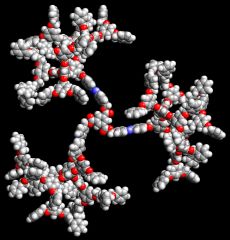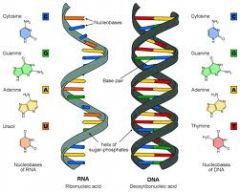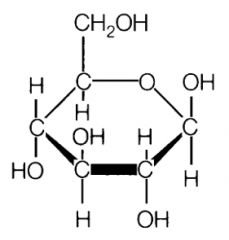![]()
![]()
![]()
Use LEFT and RIGHT arrow keys to navigate between flashcards;
Use UP and DOWN arrow keys to flip the card;
H to show hint;
A reads text to speech;
34 Cards in this Set
- Front
- Back
- 3rd side (hint)
|
Atom |
Smallest point of an element (where it is still that element) |
Can't be broken smaller |
|
|
Molecule |
Smallest unit of a compound |
|
|
|
Element |
Something made of atoms with equal number of protons |
Periodic table |
|
|
Proton
|
A particle in an atom's nucleus with a positive charge
|
Part of nuclei with a charge
|
|
|
Electron
|
A particle around an atoms nucleus with a negative charge
|
Cloud
|
|
|
Neutron |
A subatomic particle that is neutral (no charge) |
|
|
|
Ion |
Atom or molecule that's either negative or positive in charge due to the loss or gain of electrons |
Loss or gain |
|
|
Isotope |
An atom with more or less protons than usual |
Protons |
|
|
Ionic bond |
Chemical bond formed by more than one ion's opposite charges |
Electrons given |
|
|
Covalent bond |
Chemical bond where electrons are shared |
Share |
|
|
Polar covalent bond |
Unequal shared electrons |
Unequal charge |
|
|
Law of conservation of matter |
Matter can't be created or destroyed |
Everything exists as is |
|
|
Activation energy |
Energy used in a chemical reaction |
Chemical reaction |
|
|
Hydrogen bond |
1. Weak attraction between hydrogen and oxygen, nitrogen or fluorine atoms. 2. Holds together DNA |
Weak attraction and holds together.... |
|
|
pH scale |
Scale from 0-14 showing the concentration of ions. Less than 7 is acidic |
Acidic and basic |
|
|
Acid |
pH less than 7. More dissolved hydrogen ions than hydroxide ions |
Less |
|
|
Base |
pH more than 7. More dissolved hydroxide ions than hydrogen ions |
More |
|
|
Organic compounds
|
Where carbon atoms are combined with hydrogen and usually oxygen atoms
|
|
|
|
Organic compounds
|
Where carbon atoms are combined with hydrogen and usually oxygen atoms
|
---- Combined with ----
|
|
|
Macromolecules
|
Large complex molecules
|

|
|
|
Polysaccharide
|
A complex carbohydrate made of many simple sugars bonded in a chain
|
|
|
|
Polypeptide
|
Long chain of chemically bonded amino acids
|
|
|
|
Peptide bond
|
A covalent chemical bond formed between 2 amino acids
Bonds amino group of amino acid to carboxyl of the next |
|
|
|
Nucleic acids
|
DNA or RNA
|

|
|
|
Monosaccharides
|
A simple sugar with 3-7 carbon atoms in carbon skeleton
|

|
|
|
Macromolecules
|
Large complex molecules
|
|
|
|
Carbohydrates
|
Organic compound made of carbon, hydrogen and oxygen (hydrogen and oxygen are a 2:1 ratio)
Examples: sugar, starches and cellulose |
|
|
|
Lipids
|
Fat, oil, wax or fat like
Usually has Fatty acids in molecular structure |
|
|
|
Disaccharide
|
A Double sugar made of chemically bonded simple sugars
|

|
|
|
Nucleic acids
|
DNA or RNA
|
|
|
|
Monosaccharides
|
A simple sugar with 3-7 carbon atoms in carbon skeleton
|
|
|
|
Peptide bond
|
A covalent chemical bond formed between 2 amino acids
Bonds amino group of amino acid to carboxyl of the next |

|
|
|
Amino acids
|
Small molecules that contain carbon, hydrogen, oxygen and nitrogen atoms
|
|
|
|
Nucleotides
|
A subunit of DNA and RNA made of 5-carbon sugar, nitrogen base, and a phosphate group
|
|

